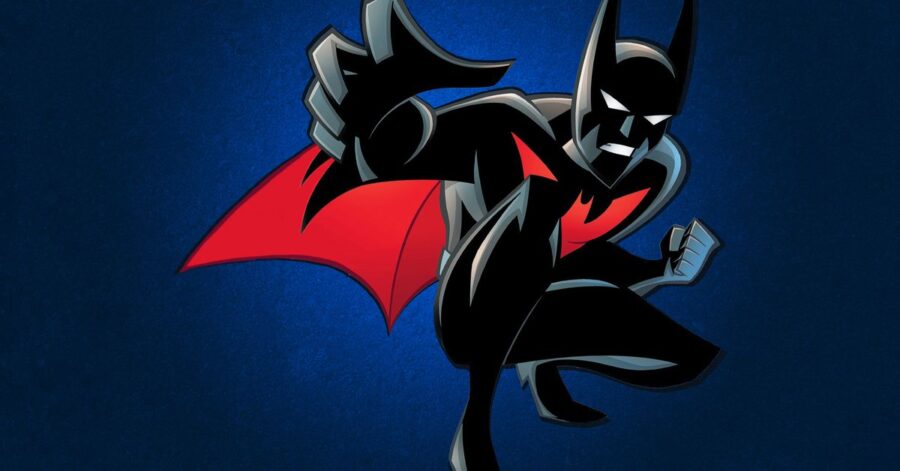Early this year, HBO Max made every episode of the beloved Batman: The Animated Series available to stream on the service. In addition, all three seasons of its sequel series, 1999’s futuristic Batman Beyond, were also made available to stream. With the 20th anniversary of the series’ final episode approaching later this year, there was no better time to name our favorite episodes from one of the darkest entry points in the DC Animated Universe.
A studio-mandated reboot-sequel to the wildly successful BTAS featuring a teenage protagonist focusing on an all-new cast of villains with nary any forethought, Batman Beyond was destined to underwhelm. It’s a credit to series creators Bruce Timm, Paul Dini, and Alan Burnett — all of whom worked on the original series — that the sleek animated series overshot expectations and has since grown into a cult classic. Combining cyberpunk and sci-fi tropes such as body modification, artificial intelligence, and biological engineering with themes of redemption and the burden of legacies, the story of Terry McGinnis’ inheritance of the iconic cape and cowl (minus the cape) under the tutelage of older and world-weary Bruce Wayne become one of the most enduring and defining incarnations of the Dark Knight to date.
Strap into your flying Batmobile of the future: Here are the picks for Batman Beyond’s best episode from two people who adore the show, Polygon’s Susana Polo and Toussaint Egan.
Rebirth Part I & II
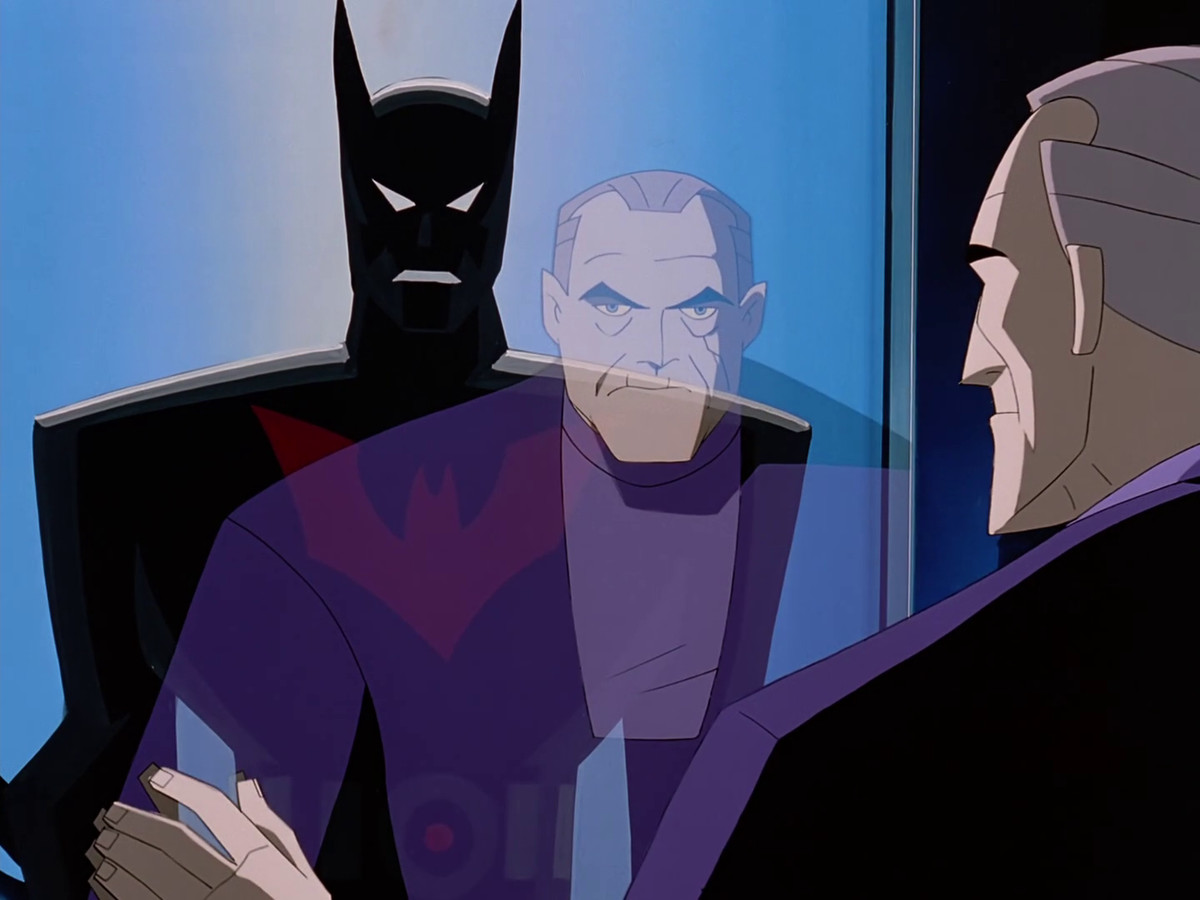
Image: Warner Bros. Animation
Batman Beyond exists because of an executive mandate — to replace Batman with a teenager — but it persists because the creative team went to great lengths to spin straw into gold.
What if Gotham was Blade Runner’s Los Angeles? What if the city was overrun by the clown gangs from Akira, and they worshipped a mythologized version of the Joker? What if our Kaneda, in this metaphor, became Batman, but was also, kind of, Spider-Man? What would it look like if Batman: The Animated Series had its own Dark Knight Returns? And is Bruce Wayne anyone if he can’t be Batman anymore?
The show’s two-part pilot is in many ways the whole of the show itself distilled into a mini movie, with moments that rank among some of the best beats of Batman history. As when the leader of the Joker gang sneers “Who do you think you’re talking to, old man? We’re the Jokerz,” only for the roughed up tones of Kevin Conroy to gleefully deadpan (can you gleefully deadpan? He manages it) “Sure you are.” —Susana Polo
Meltdown
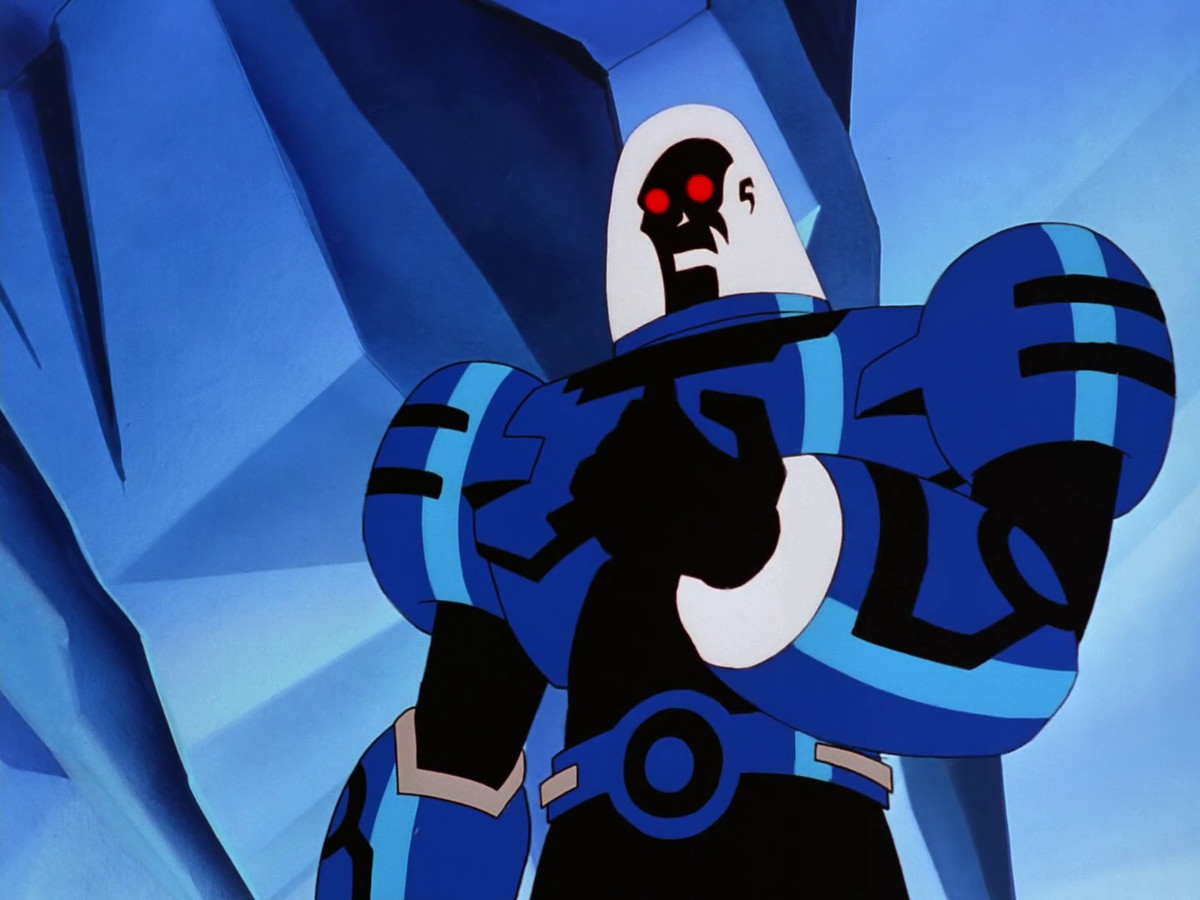
Image: Warner Bros. Animation
Batman: The Animated Series is famous for reinventing obscure Batman villains, which were often so compelling that they were swiftly adopted into the comics. Most modern readers might not even know that before Batman: The Animated Series got their hands on the character, Mister Freeze was just a diamond thief with a cold gimmick; no dying wife in cryostasis, no corporate malfeasance, no quest for revenge, no pathos.
But for Batman Beyond, the same team who gambled on “future teenage cyber Akira Batman” gave themselves an additional challenge: no old villains. Storylines could not dredge up bad guys from BTAS unless the idea was very, very good. “Meltdown” is very, very good.
Mister Freeze stands at the frozen heart of many of the best episodes of Batman: The Animated Series, perhaps the only one of its villains to have a true through-line of character development. And sure, it was an arc that ended with his body decaying away until he was just a head on a robot-spider base that crawled across walls and into the neck of his Mister Freeze suit, but … that rules. “Meltdown” brings Freeze to his ultimate form as a tragic anti-hero, a final button on Batman: The Animated Series’ most successful villain rehabilitation project. —SP
Shriek
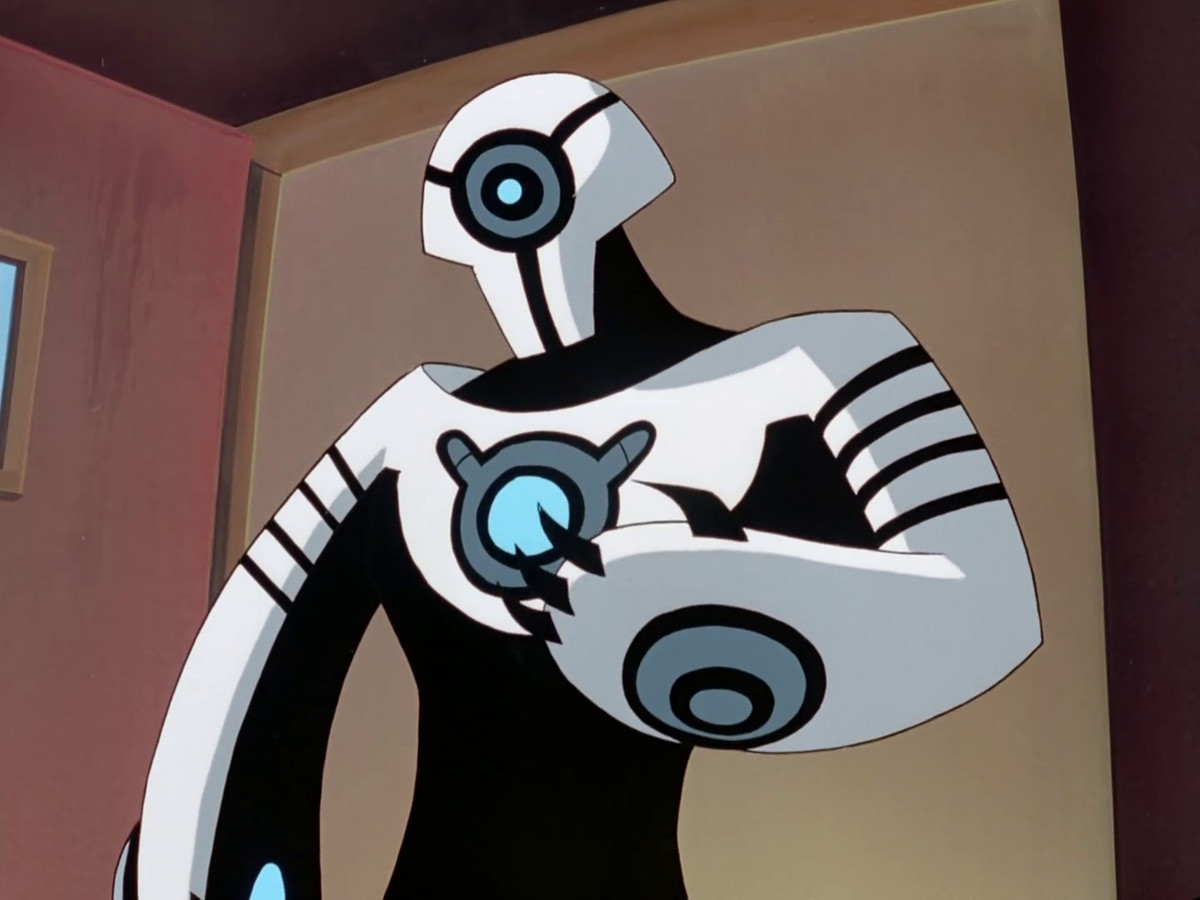
Image: Warner Bros. Animation
“Shriek” is noteworthy for introducing one of the most fascinating villains of the McGinnins Batman-era: the renegade sound-amplifying engineer Walter Shreeve (aka Shriek). The episode opens with Shriek attempting, and failing, to assassinate Bruce Wayne at the behest of Deric Powers, CEO of Wayne-Powers Enterprise (and the super-powered villain known as Blight). With Bruce alive yet hospitalized, it’s up to Terry to uncover the killer’s true identity while Shriek attempts yet another more subtle and manipulative means of achieving his mission. In “Shriek,” we get a great opportunity to see the new Batman flex his nascent detective skills, plus some cool fight scenes that make inventive use of some neat diegetic sound manipulation. Not to mention an iconic exchange between Bruce and Terry at the end. —Toussaint Egan
Disappearing Inque
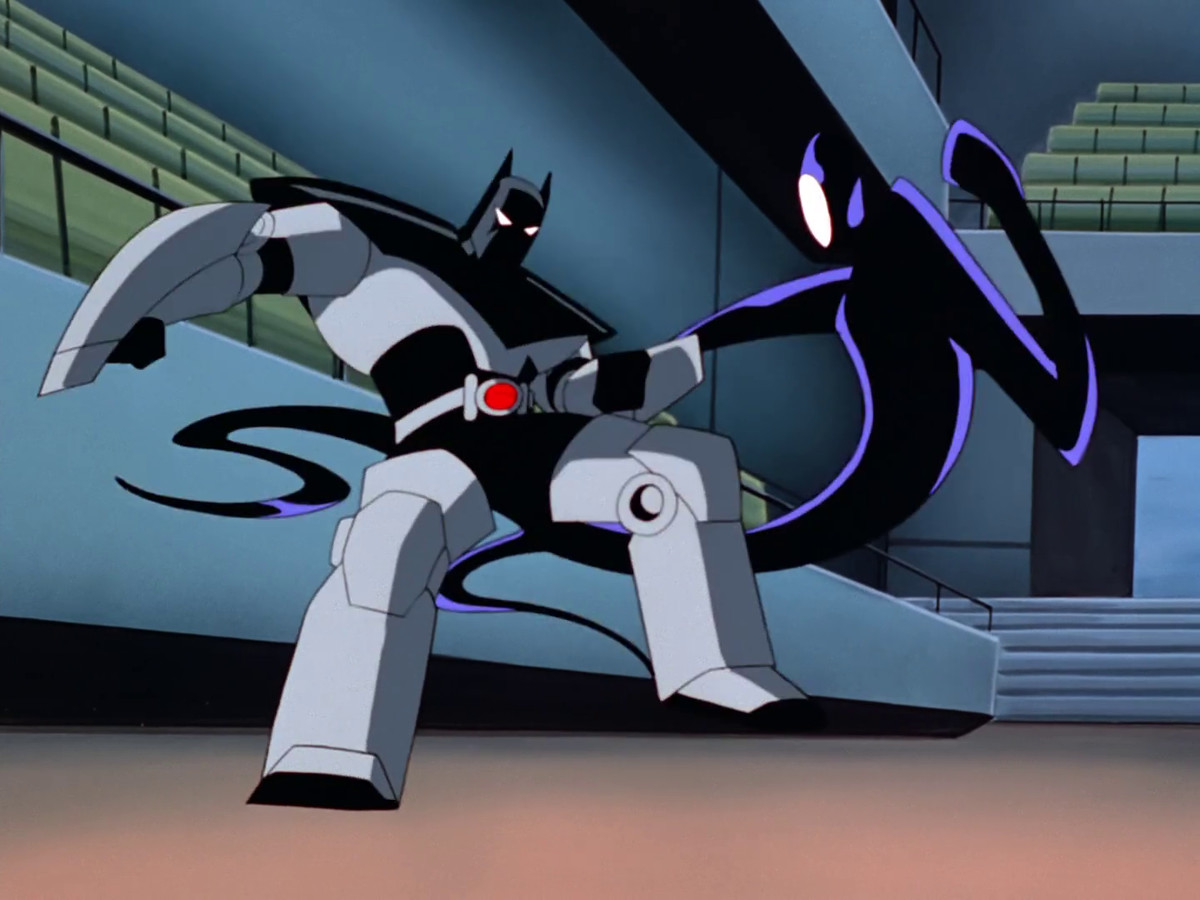
Image: Warner Bros. Animation
The funniest things about Batman Beyond were the aspects of the show designed to make executives think it would be more toyetic than Batman: The Animated Series — a cutting edge 2000s cyber future look! Original villains! A teen Batman! — actually made it darker, more violent, and chock-a-block with body horror.
“Disappearing Inque” is the second appearance of the villain Inque, Batman Beyond’s twist on Clayface, a high femme fatale with the consistency of an oil slick — in her first appearance she nearly kills Terry by forcing her body down this throat. But this episode trades on her true threat to Batman: She knows he has an old man in his ear helping him.
Inque breaks free of prison by promising her obsequious guard that she can give him powers just like hers, and captures Terry, forcing Bruce to don Chekov’s Exosuit to save his protégé at the expense of his own heart. At the end of the whole thing, Inque’s terrible guard winds up with only a half dose of the Science Potion, and is rendered into goo without any ability to control his form, sentenced to a life in prison being fed a liquid diet by an equally annoying caretaker, with all the horror and comeuppance of a classic Twilight Zone episode.
Show up for Inque, the best villain in Batman Beyond, stay for the show’s sparing but always on point use of a rock guitar arrangement of the Batman: The Animated Series theme song. —SP
Splicers

Image: Warner Bros. Animation
While Batman Beyond’s season 1 episode “The Winning Edge” addressed the dangers of performance-enhancing drugs, “Splicers” tackled another parental bugbear of youthful indiscretion: body modification! A new fad has caught on among Terry’s classmates in the way of splicing: the combination of animal attributes into human DNA for cosmetic effect and physical advantages. Batman confronts the mastermind behind the new process, Dr. Cuvier of the Chimera Institute, and thwarts an attempt on the life of the district attorney by his spliced henchmen, but not without taking a dose of the mysterious serum in the process. As Terry contends with the effects of his newfound transformation, he’ll have to face off against Cuvier one last time in order to shut his splicing operation down for good.
“Splicers” feels like a perfect time capsule of the concerns and youth culture of the early aughts despite taking place in an alternate 2019 and features an explosive finale in what stands out as one of the first of the series’ several ventures into body horror. Plus, it’s got rapper Ice-T providing the voice for ram-spliced teenage goon. Fun! —TE
Earth Mover
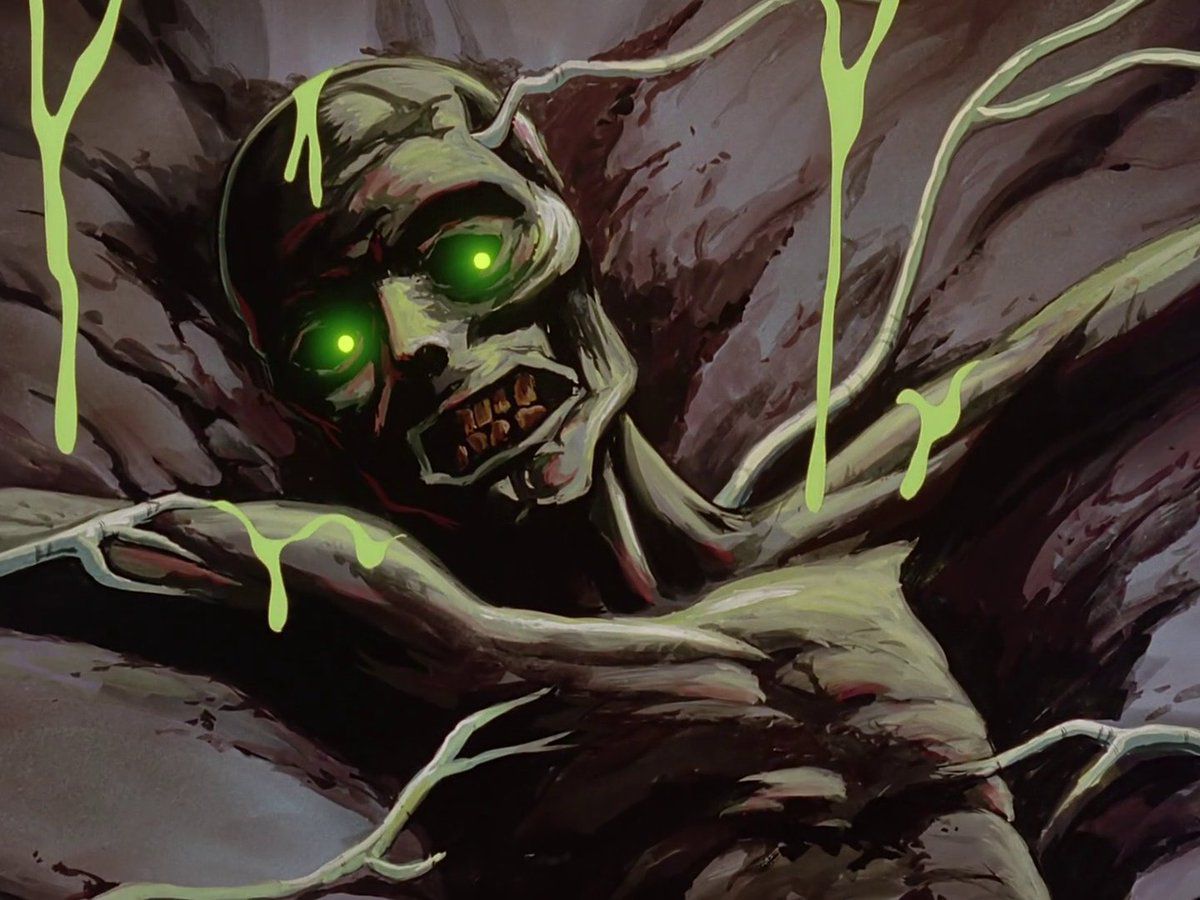
Batman Beyond,
Moving into its second season, Batman Beyond began to distinguish itself apart from Batman: The Animated Series by being genuinely horrifying. Case in point: Earth Mover. When one of Terry’s school friends Jackie fears that she is being stalked, Terry chases after and confronts the man — only to discover that he is composed entirely of dirt. When Jackie and her father are kidnapped by more of these strange entities, Batman must face off with one of the most powerful and disturbing enemies that he has ever encountered. I won’t ruin the twist, but if for some reason you can’t tell by the image attached, it’s grisly. —TE
Mind Games
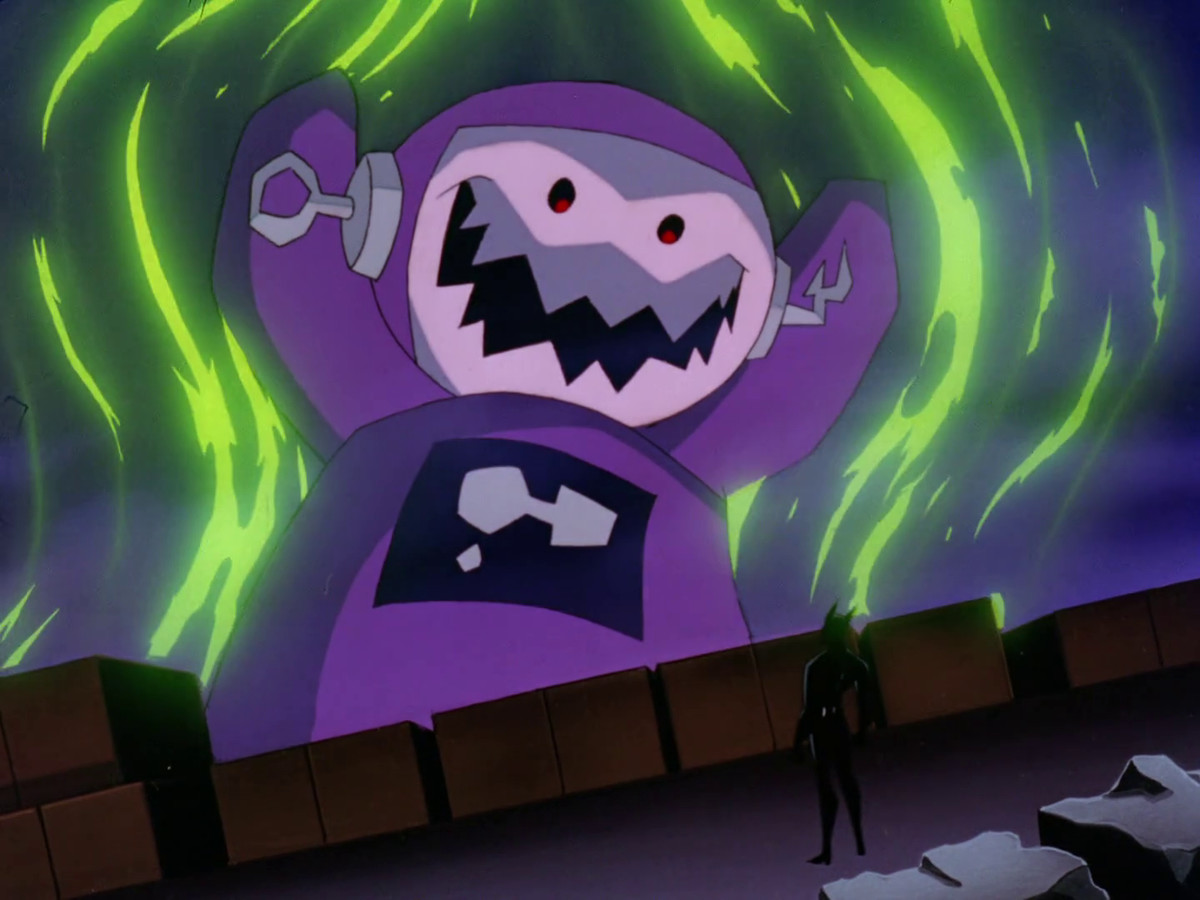
Image: Warner Bros. Animation
In all the instances of Batman Beyond tipping its hat (err, cowl) to Katsuhiro Otomo’s 1989 anime classic Akira, no nod is more explicit than the episode “Mind Games.” While patrolling the city in the Batmobile and memorizing the US presidents for an upcoming history exam (including a playful nod to an as-of-then unknown 43rd president that’s positively cringe-inducing now in hindsight), Terry receives several telepathic cries for help from Tamara, a young girl who bears a striking resemblance to Wednesday Adams.
After learning that Tamara has been abducted by a clandestine criminal organization known as the Brain Trust, Terry must contend with the group’s cadre of superpowered assassins in order to rescue her. The fight scene between Batman and a mysterious mute (later revealed in Justice League Unlimited to be the son of crime boss Steven Mandragora) in the abandoned school house is one of series’ best, and the scene of Tamara conjuring a psychic projection of her stuffed animal to distract one of her captors represents the peak of Batman Beyond’s aforementioned Akira worship. —TE
Out of the Past
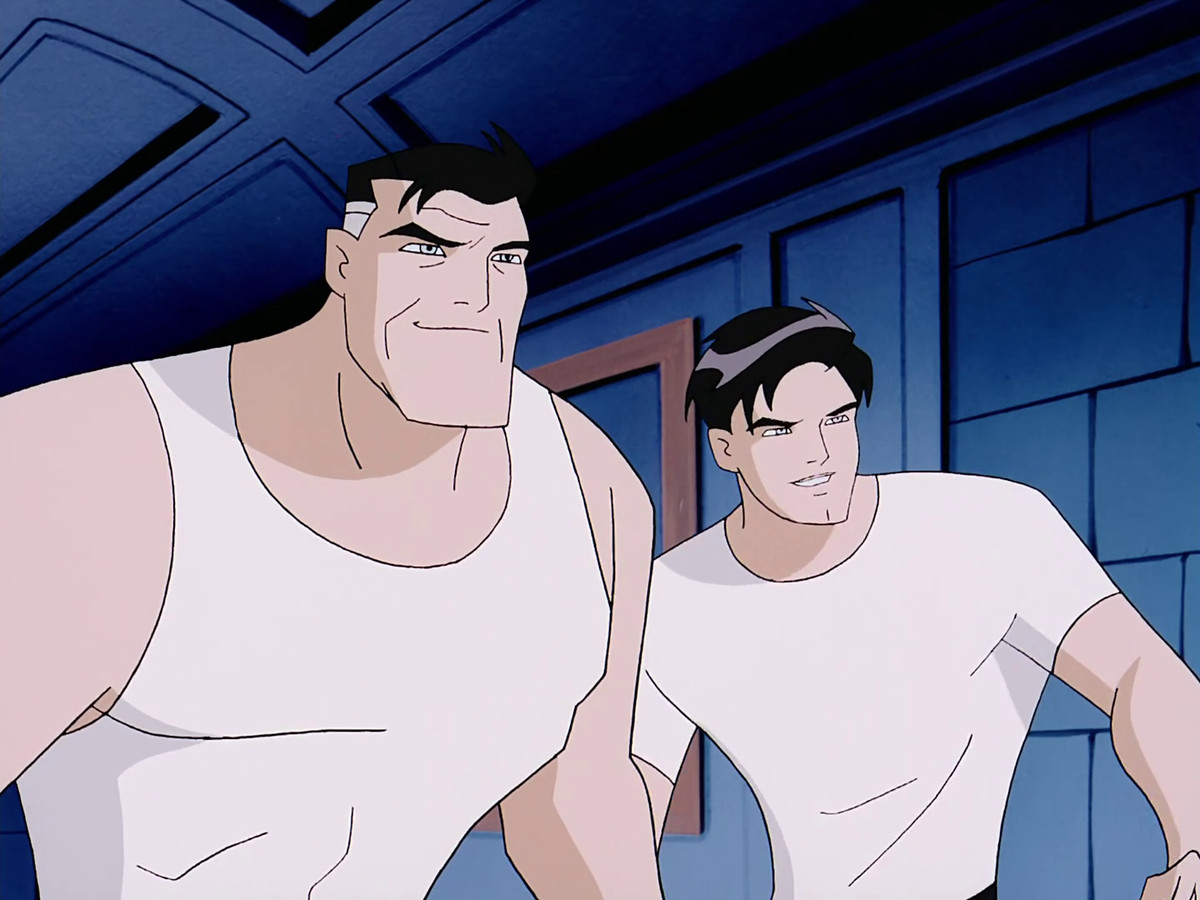
Image: Warner Bros. Animation
Batman Beyond is a show about legacies — not just want it means to inherit them, but what it means for those who relinquish their burden. Talia al Ghul, the daughter of Batman’s longtime adversary Ra’s al Ghul and one of Bruce’s former lovers, visits him to offer him a simple gift: eternal youth via the now-perfected rejuvenating properties of the Lazarus pits. Faced with the mounting frustrations and physical challenges of his advancing age, Bruce reluctantly accepts the offer — only to immediately regret it.
“Out of the Past” ranks as one of the best Batman Beyond episodes for several reasons, the least of which include a fantastic dynamic duo team-up between a youthful Bruce Wayne and his young apprentice and the return of arguably the most challenging and dangerous nemesis the original Batman has ever faced, aside from the Joker. —TE
The Call
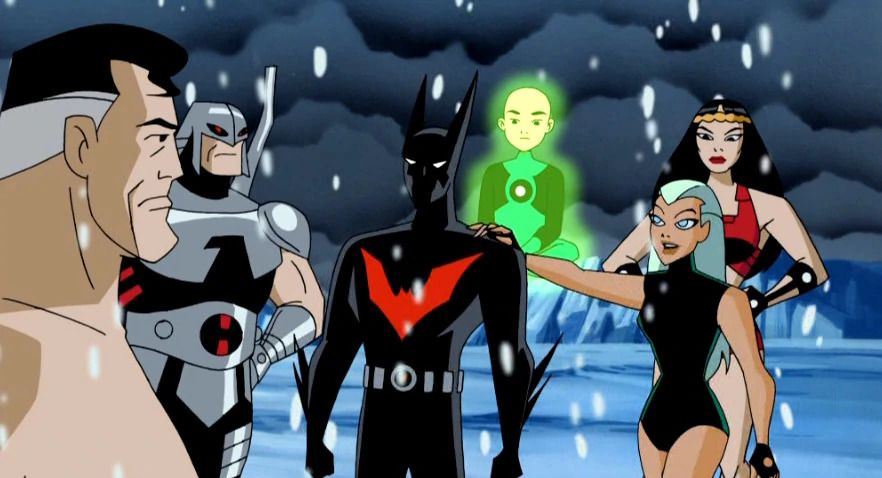
Image: Warner Bros. Animation
Today, the DC Animated Universe is a sprawling network of shows, with a continuity as deep as any other spinoff in the DC Multiverse (although it still does not have its own designated Earth). That expansive world began with its creators allowing the wider world of the DC Universe to bleed into solo shows wherever possible.
Case in point: The first appearance of the Justice League in the DCAU is the Justice League of Batman Beyond. The plot stands well enough on its own in “The Call,” but the real selling point of this episode is the show’s team flexing their conceptual skills on older versions of Superman and Big Barda, and an entire original roster of futuristic Justice League members, including new takes on Hawkman, Aquaman, Green Lantern, and the Atom. —SP
The Once and Future Thing, Part Two: Time, Warped

Image: Warner Bros. Animation
OK, OK, this is not an episode of Batman Beyond. But it is the best episode of Justice League Unlimited that features the Batman Beyond setting. (Before you rush to the comments, I am aware that that is a category that includes “Epilogue.” But here’s the thing: The Batman Beyond parts of “Epilogue” are not good.)
If you’ve never watched “Once and Future Thing,” you should probably start with Part 1, but just understand that it is really 20 minutes of setup for the main event. The main event is present day Batman and Green Lantern following a time-traveling madman to the Batman Beyond-era, where they team up with a middle aged Static, Hawkgirl, Green Lantern’s mixed race-and-species son Warhawk, Terry McGinnis, and his mentor, Old Batman.
Even if the episode didn’t have three Batmans in it, it would still be a wild and satisfying experience. But it does have three Batmans in it, and so we get to see Kevin Conroy act his way through a scene where present day Batman plays Good Cop to Old Bruce Wayne’s Bad Cop. —SP
Polygon – All
Source link
Related Post:
- The DC: Batman Bat-Tech Edition app is out now on iOS and Android, letting you use Batman’s tech to fight crime in awesome AR | Articles
- Titans season 3 review: Too much Batman for a show with no Batman
- Here’s where Xur is in Destiny 2 today – Beyond Light, but not beyond Xur
- Final boss battle episodes arrive tomorrow for Dragon Ball Z: Kakarot – PlayStation.Blog
- First Two Episodes of Scarlet Nexus Anime To Debut Early On Livestream
- UK: all episodes of Pokémon Journeys: The Series available on Netflix from 1st July
- Metroid Dread Producer Hopes Fans Look Forward To “Future Episodes” Once The Current Story Arc Concludes
- Metroid Dread producer teases fans and says he hopes they look forward to “future episodes”
- UK Pokémon Fans Can Now Stream Episodes On BBC iPlayer
- All 180 Episodes of Seinfeld Will Come to Netflix in October
